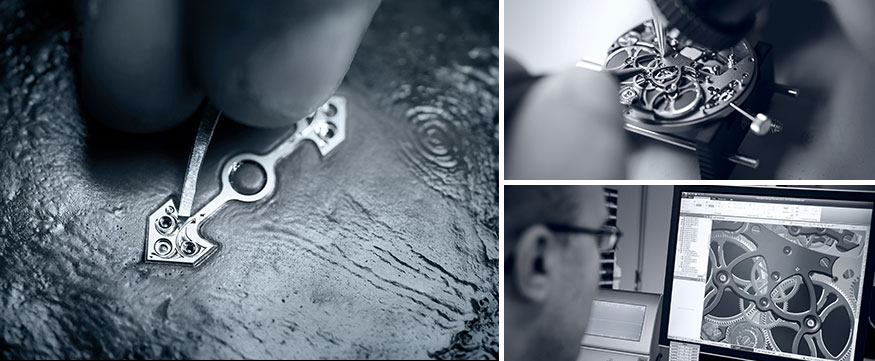Ticket - Talk

The constant force escapement is a mechanism where, irrespective of whether there is maximum power or minimum power left in the mainspring barrel, a consistent amount of force is transmitted through the gear train all the way to the heart of the watch, the escapement.
Even when the watch is almost fully unwound - it still keeps correct time.
Legendary independent watchmakers like F.P. Journe have invented their own version of the constant force escapement - the Remontoir d'Egalite. A. Lange & Söhne have used the Fusée and Chain escapement in some of their watches to provide constant force.
Girard-Perregaux's constant force escapement is another mechanism that fascinates me.

F.P. Journe's first wristwatch with a constant force mechanism seen at 6'oclock on the dial and the Girard Perregaux Constant Escapement LM
There lies a story behind the development of this innovation - a Rolex employee, Nicolas Déhon, sat at a train station, holding a ticket vertically with his thumb and middle finger, snapping it back and forth with his forefinger. He realised that by pushing it on one side, with minimal force - the ticket would bend from open bracket to close bracket shape. He theorised that if he could incorporate this in a watch mechanism, he could possibly create his own constant force escapement.
Rolex lost out on the opportunity to take Déhon's idea, largely due to the fact that the technology required to build the mechanism was not available at the time of his initial brainwave.
Over a decade ago, Girard-Perregaux picked up Déhon's idea, and with the backing of owner Luigi Macaluso, finally developed the Girard-Perregaux Constant Force Escapement L.M., which was introduced as a prototype in 2008.

The watchmaker built this constant force mechanism, making sure the watch maintained time with a very high degree of accuracy right through the six day power reserve of the watch, irrespective of the varying torque delivered by the twin barrels each featuring two mainsprings.

The movement is also unique, because unlike other watches where the constant force mechanism is built separate from the escapement or the mainspring, this component is part of the main escapement itself.
The fifth wheel seen at the top of the mechanism powers two tri-lobed escape wheels. The twin escape wheels in turn engage the bi-jeweled pallet fork to power the balance wheel. What really differentiates this mechanism from others, is the thinner than hair piece of silicon, running horizontally across the centre of the entire contraption.
Meet Nicolas Déhon’s train ticket - The Silicon strip.
Through symmetrical flexion, this piece of silicon, anchored to two curved, reciprocating arms emanating from the pallet fork maintains constant force in the watch.
Video Credit: aBlogtoWatch
Just as a passionate car collector pops the bonnet of a car to appreciate the engine that lies beneath, watch collectors spend a lot of time studying watch movements.
With the skeletonised dial of the Girard-Perregaux Constant Escapement L.M., you don't need to pop the hood to see the engine within, as the constant force escapement forms a visible and prominent part of the watch face.

Over the years, Girard-Perregaux has produced some of the most innovative ideas in their wristwatches.
With designs such as the Girard-Perregaux Constant Escapement L.M., they have propelled the watchmakers higher into the realms of haute horlogerie.


